Painted daisy (Pyrethrum, Persian insect flower) is 24 to 36 inches (61 – 91.5 cm) tall plant, with lovely, 2 to 3 inches (5 – 7.6 cm) large flower heads. You will like petals spreading from the yellow, button-like center, making this flower one of the most beautiful ones you have ever grown in your garden.
It is fantastic to start summer surrounded by these magnificent white, pink, or red flowers blooming abundantly all around. Moreover, you can enjoy its beauty until the first frost. However, that is not all! Even after blooming, this plant looks gorgeous thanks to fernlike, feathery blue-green or chartreuse-gold leaves.
Painted daisy |
|
|
Botanical name |
Tanacetum coccineum (former Chrysanthemum coccineum) |
| Family |
Asteraceae |
|
Type |
Perennial flower |
|
Bloom time |
From late spring to autumn, depending on the plant variety |
|
Sun |
Painted daisy is one of these plants which require as much sunlight as possible. Provide at least six to eight hours of direct sunlight for it daily in summer |
|
Temperatures |
This plant requires high temperatures to grow healthy and vigorous |
|
Soil |
Painted daisy needs well-drained, lightly-acidic, humus soil to grow healthy and vigorous |
|
The soil pH |
5.2 to 7 |
| Frost tolerance |
It is not tolerant to frost |
|
Best companions |
Catmint, daylily, and poppy |
|
Watering |
Deeply soak the ground up to 8 inches (20 cm) three times a week, as soon as you notice that the 2 to 4 inches (5 – 10 cm) of the topsoil is dry |
|
Fertilizing |
It will be enough feeding your flower with 5-10-5 slow-release fertilizer once in a growing season, best in spring |
Toxicity of Painted Daisy
Since Painted daisy contains toxic chemicals, gardeners handle this plant with the same caution as they manipulate synthetic insecticides. Contact with them may cause irritation of eyes, itching, sneezing, and dermatitis.
Plus, take care not to swallow it. The permissible exposure limit for exposure to pyrethrum is 5 mg/m3 a day. It is directly life-threatening at the level of 5000 mg/m3.
Also, you should be careful if you have a cat because Painted daisy is poisonous to these pets. It contains toxins which affect cats negatively, such as:
- Sesquiterpene – This chemical irritates skin and causes excessive salivation, bleeding in the digestive tract, vomiting, and diarrhea.
- Pyrethrins – The fact that these chemicals quickly go to the bloodstream makes them highly dangerous to your beloved pet. Working as neurotoxins, they affect the nervous system and may cause a lack of coordination, difficulties in breathing, and even death.
Believe it or not, people have used this plant as an insecticide for centuries. Plus, in the Middle East, it is well-known as a lice remedy (Persian powder).
Thanks to Austrian industrialist J. Zacherl, this powder became famous worldwide under his brand Zacherlin. Nowadays, it is a popular non-synthetic insecticide, which is widely used in organic agriculture.
How to Plant Painted Daisy in Your Garden
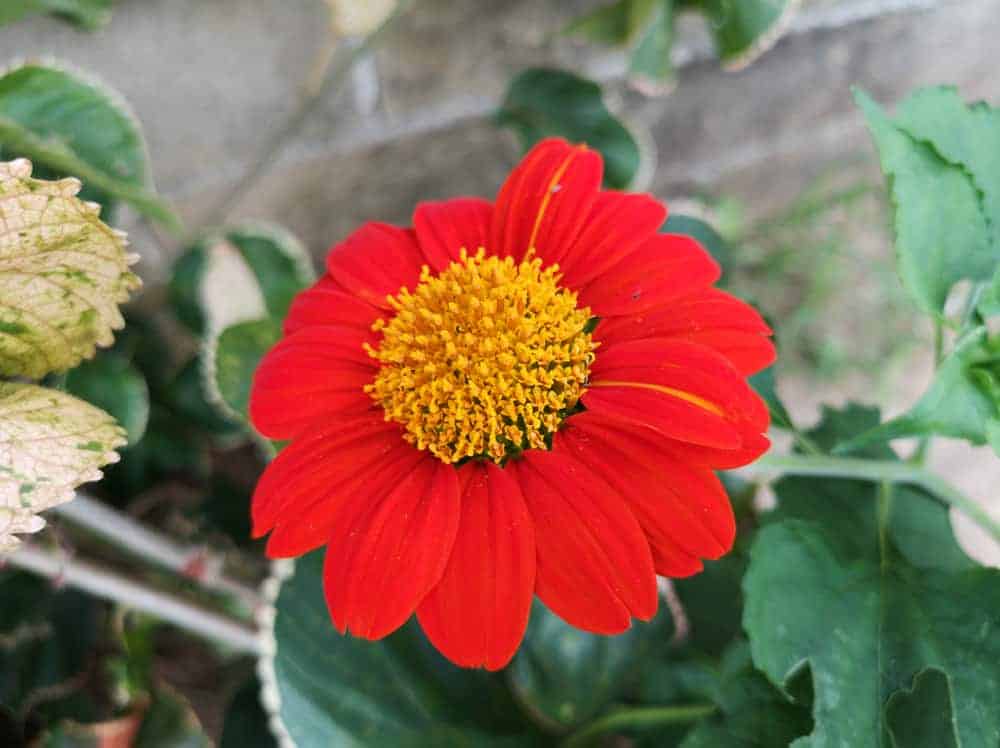
Start propagating your Painted daisy from spring to autumn. You can do it in three different ways, from seeds, cuttings, or by division.
Painted Daisy Propagation by seeds
- Sow seeds outdoors
The most comfortable solution is to sow Painted daisy seeds directly in your garden about a month before the last frost in spring.
Prepare the ground by removing weeds and applying compost into the top 6 to 8 inches (15 – 20 cm). Place a group of four seeds together and cover them with 0.12 inches (3 mm) of the soil. Always provide at least 18 to 24 inches (46 – 61 cm) of space between these groups.
- Sow seeds indoors
If you want your Painted daisy to start blooming earlier, you can start seeds indoors in flats or a pot. You can also purchase seedlings grown in the nursery containers. In both cases, you need to provide enough light and the temperatures of at least 60 to 70 F (15.5 – 21 C) for germination.
If you decide to sow seeds by yourself, water them regularly. Expect to see first seedlings after 10 to 21 days. The right time for transplanting seedlings in the garden is when the temperatures during the night become high enough.
Remove new plants from the pot or flat gently and put them into a hole, which is deep enough and at least two times wider than the root ball. Add garden soil around the roots and firm it to remove air bubbles.
Water regularly a few weeks until your new plants establish appropriately. It would be excellent to place a 2 inches (5 cm) thick layer of mulch around them to prevent weed growth.
Painted Daisy Propagating by dividing
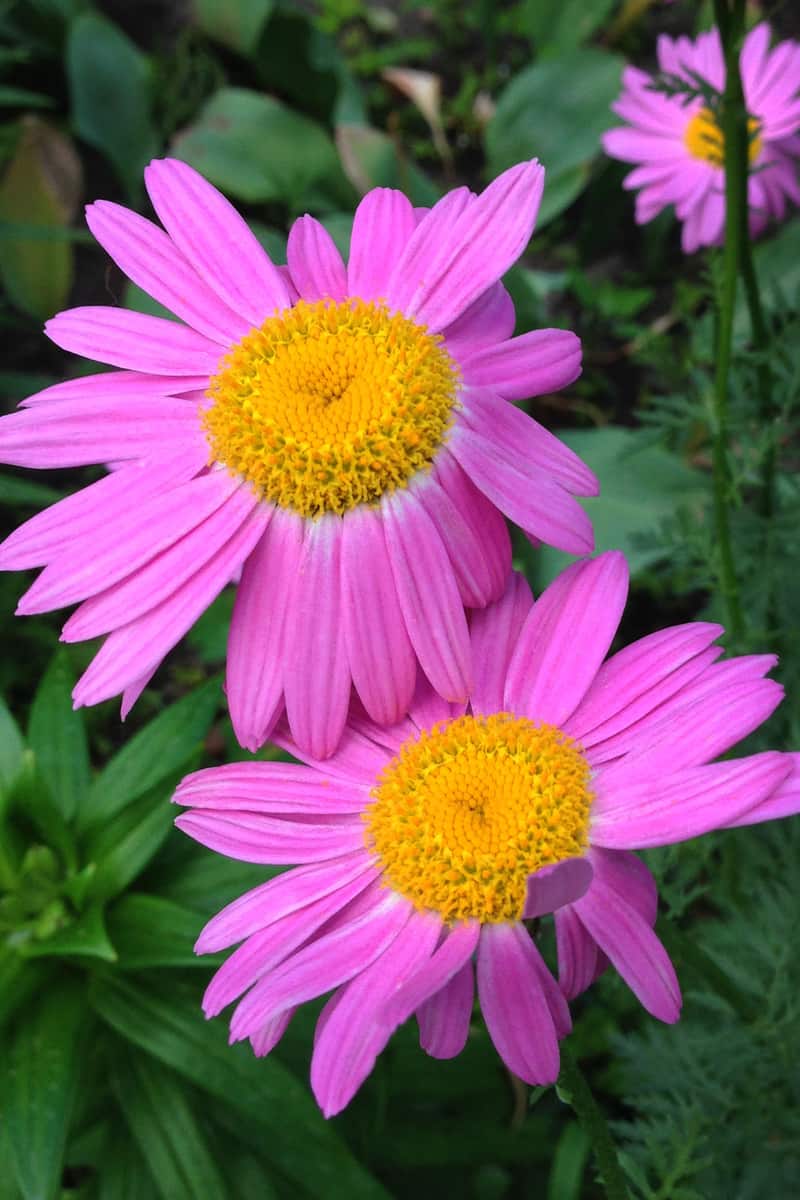
Even though your Painted daisy is a perennial, it won’t live forever. You should restore it every few years. Dividing is a very convenient way to get new plants for your garden.
Also, it is an excellent solution for overcrowded flowers, which begin to lose vigor and strength. As soon as you see that your Painted daisy stops producing large, colorful flowers, it is the time for action.
The best time for dividing your plant is in spring or the beginning of autumn. Dig large clumps from the ground and pick out the healthier and most vigorous ones. Remove dead parts if there are any. After that, separate clumps the way that every piece has a few growing ‘eyes’ and a part of the root.
Take care to loosen the ground to a depth of 12 to 16 inches (30.5 – 41 cm) and mix mature manure, compost, or peat moss with it. Re-plant pieces right away in the prepared soil, and water them abundantly.
Propagating by cuttings
Cuttings are an option for propagating Painted daisy, although it is not a quite reliable process. Start with selecting healthy cuttings. Cut them with a sharp garden knife and dip the cut end into the rooting hormone.
Make holes in the potting mix and put cuttings into them. Keep the soil moist until roots form. Then transplant new plants into the garden.
Popular varieties of Painted Daisy |
||
|
Variety |
Petals | Bloom time |
| Mont Blanc | White |
In the first half of the summer |
|
Mrs. James Kelway |
White or pale-pink | In the first half of the summer |
| Robinson’s Mixture | White and pink mix |
In the first half of the summer |
|
Eileen May Robinson |
Pale pink | In early summer |
| Brenda | Magenta-pink |
From early summer to fall |
|
Robinson Red |
Scarlet-red | From late spring to mid-summer |
| James Kelway | Deep-scarlet |
In the first half of the summer |
How to Care for Painted Daisy in Your Garden
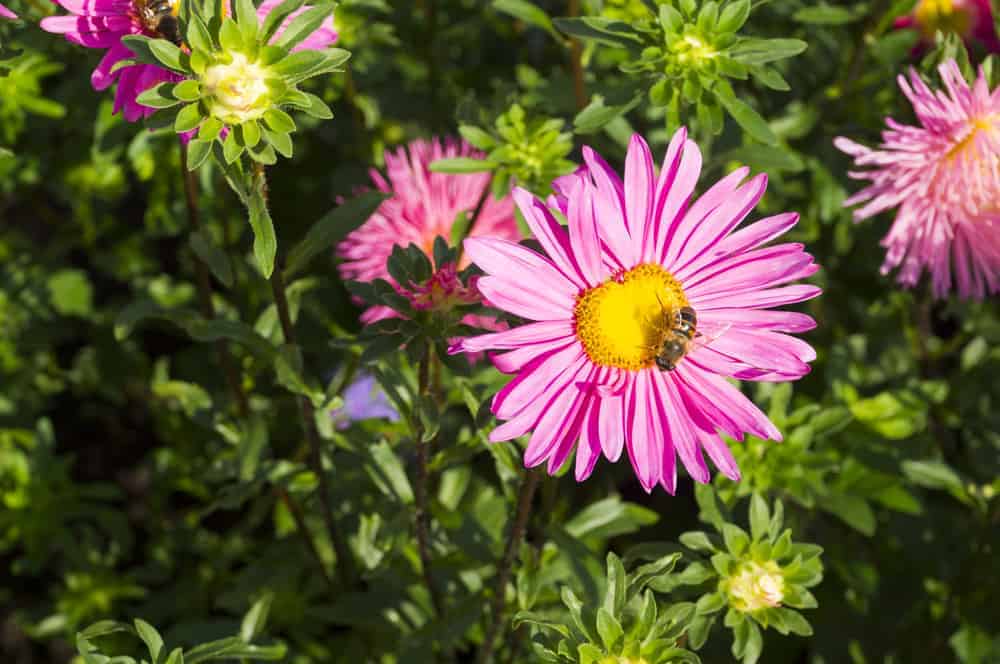
Soil
Your Painted daisy needs well-drained, lightly-acidic humus to grow healthy and vigorous. Also, it can thrive when the soil is sandy loam. Try to avoid hard clay soils because the delicate roots of this plant can’t penetrate easily through it.
Light
Painted daisy is one of these plants which requires as much sunlight as possible. It is particularly crucial in colder regions. You should plant this flower in a part of the garden with at least six to eight hours of direct sunlight daily in summer.
If you live in the region with extremely hot and dry climate, it is better to provide light shade during the afternoon. That way, you will prevent wilting of leaves.
Temperatures
Painted daisy thrives when the temperatures are high during summer and die out as soon as the first frost begins.
Watering
Moderate watering will be enough to keep the soil moist, which is the best option for Painted daisy. Take care not to sprinkle leaves while watering to prevent fungal diseases. Use a soaker hose or install a drip irrigation system and water your plant when needed.
If you live in a region with hot summers, you should water your Painted daisy more frequently. Also, keep newly-transplanted plants consistently moist for a few weeks until establishing.
Mature plants are quite drought-tolerant. However, despite that, you should keep watering once in every two or three days, depending on the soil type.
Deep soaking the ground up to 8 inches (20 cm) three times a week is better than sprinkling water a little bit daily. As soon as you notice that the top 2 to 4 inches (5 – 10 cm) of the ground is dry, it is time to provide some water for your plant.
Fertilizing
Feed your plant appropriately with 5-10-5 slow-release fertilizer in spring, which will provide enough nutrition for the whole growing season. Avoid adding it too often, especially late in the season. You don’t want to stimulate new growth and risk damaging the flower by early frosts.
Mulching
It is necessary to add a layer of mulch around your plant to keep the ground moisture and weed-free. If there is danger of alternating soil freezing and thawing, you should protect Painted daisy with a 1 to 2 inches (2.5 – 5 cm) thick layer of mulch. In general, you will get the best results with pine straw, leaves, or wood chips.
Pruning and deadheading
You can deadhead spent flowers of your Painted daisy during the flourishing season to encourage re-blooming. Sometimes, when plants are overcrowded, they can stop flowering even though the season is not over. That is the time for lightly deadheading to encourage another flush of blooms.
At the end of the season, after the first hard frost, it is the time to start pruning. Cut the wilted foliage and stalks down to the base, approximately 4 inches (10 cm) above the surface of the ground. That way, your plant will keep the energy for the production of seeds instead of growth.
Painted Daisy Pests and Diseases
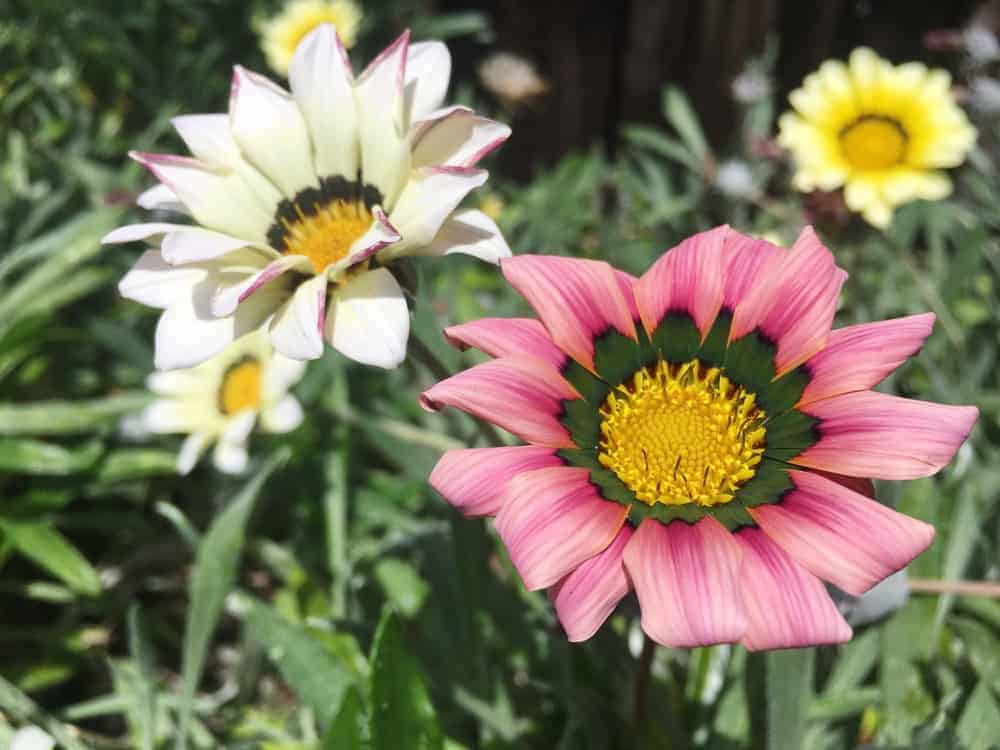
Lack of blooming
Your plant may produce fewer flowers than you have expected. Don’t worry! It is not unusual for the first year after sowing seeds, and it is directly connected with plant maturity.
Flopping
When your plant produces a bunch of flowers during the second year, you may have an issue with too weak stems. The common reason is over-watering and consequential high but thin growth of flower stems. As a result, they will flop over time.
It is not dangerous to your plant, but it will spoil the appearance of your Painted daisy. Solve the problem by watering only after the top layer of the ground dries out.
Root rots
Many pathogens may cause this problem. The best solution is to prevent it with excellent drainage of the soil.
Aphids
I hate these sucking insects feeding on the undersides of the foliage. They leave a sticky trail, which attracts ants. Get rid of these annoying insects by spraying leaves of your plant with neem oil or insecticidal soap.
If there is any possibility, you should try to attract natural predators of these bugs, and solve the problem without much effort.
Leafhoppers
They are less-common than aphids, but can damage your plant by sucking its juices. Treat Painted daisy with pyrethrin spray to kill these pests.
Thrips
These tiny, black insects suck the plant’s juices and cause discolored flecking on leaves, petals, and stems. Place aluminum foil between rows in your garden and prevent the occurrence of these bugs.
Aster yellows
When a phytoplasma attacks your plant, it will start growing stunted, while petals become green and deformed. The only thing you can do is to destroy infected plants and weeds, which are alternate hosts to the causative agent.
Botrytis
As a result of this fungal disease, you will see a grey mold on all parts of your plants, including the foliage, blooms, buds, and stems. It thrives in cold and wet weather conditions.
Solve the problem by removing affected plants and watering early in the morning to avoid letting them wet during the night.
Fasciation (cresting)
It is a bacterial infection which causes flatting of stems and appearance of elongated flowers. It is not a fatal disease, but it is not curable either. You should destroy affected plants to protect others.
Powdery mildew
It is a fungal disease appearing when the plant’s environment is too humid and the soil poorly drained.
You will see whitish, dusty-looking changes on leaves, which are not fatal but may prevent proper absorption of sunlight. Take care not to sprinkle the foliage while watering and treat the plant with neem oil.
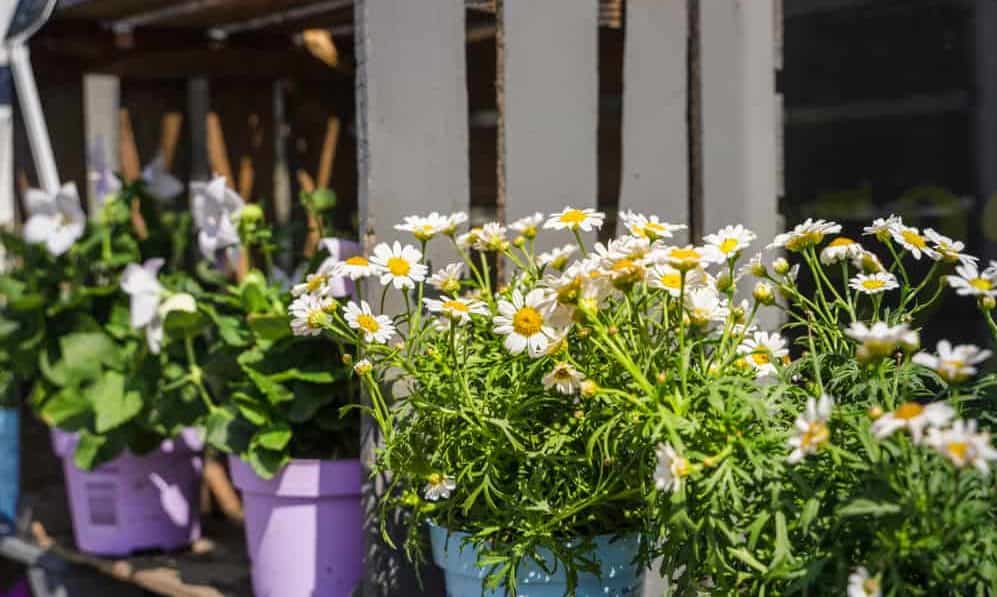
My painted daisy was nearly dead from lack of water. However I drowned it and waited. A new leaf appeared and wanted to repot it, but the leaf broke off. The roots looked healthy, but when nothing seemed to be growing I pulled the roots up, and they seem rotted, like soft seemed like too wet soil. But the leaf I stuck in the dirt has a tiny root on it. I repotted it. Anything else I can do with the root? I can’t lose this plant, please help.